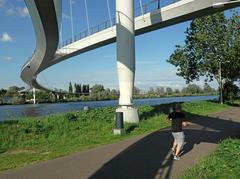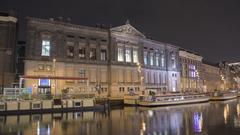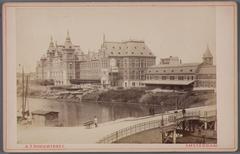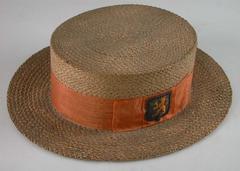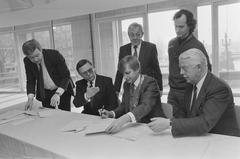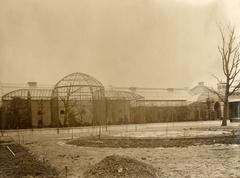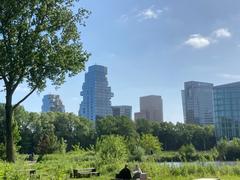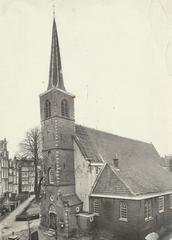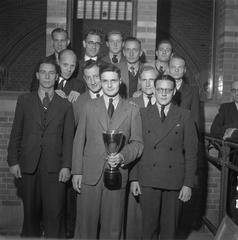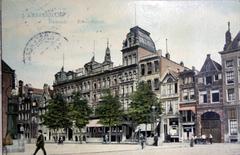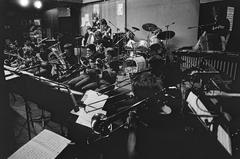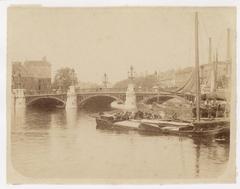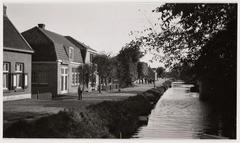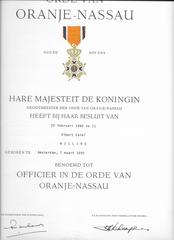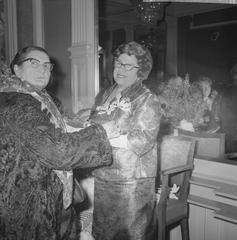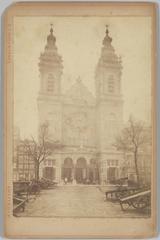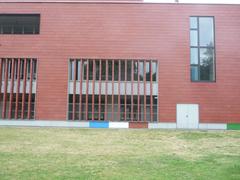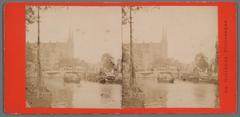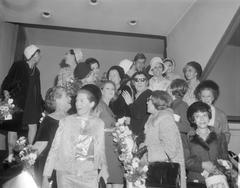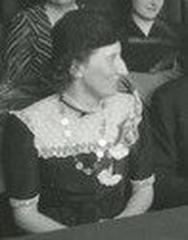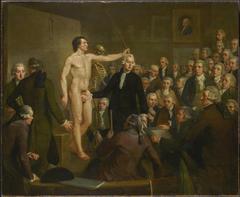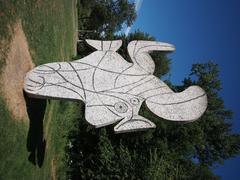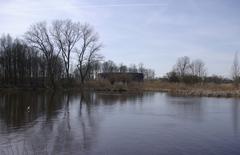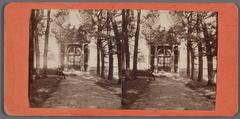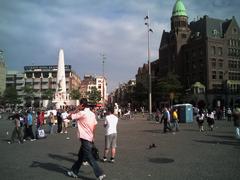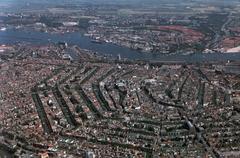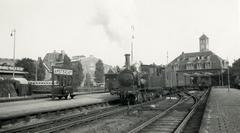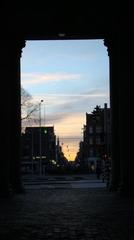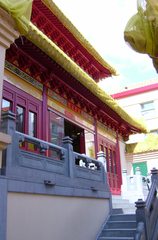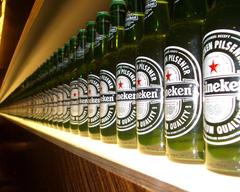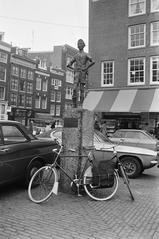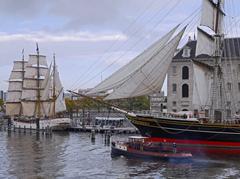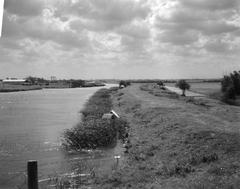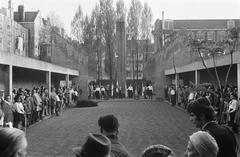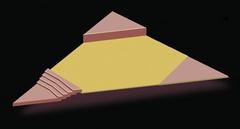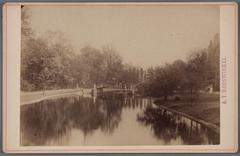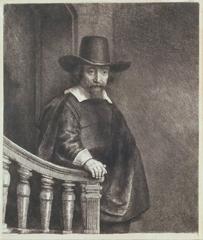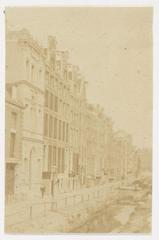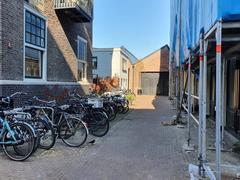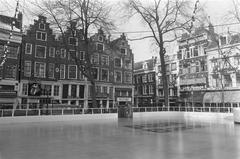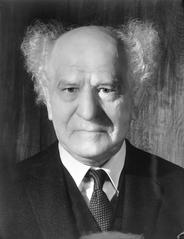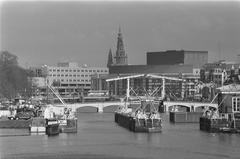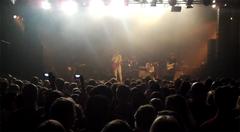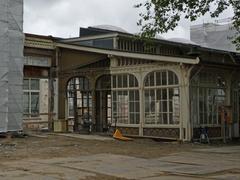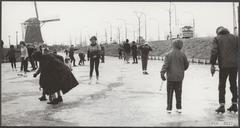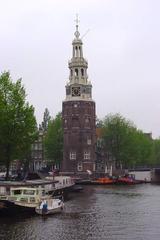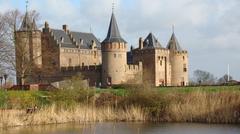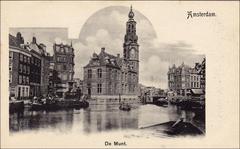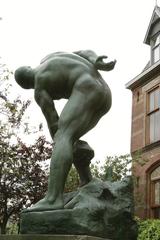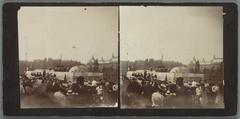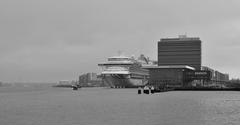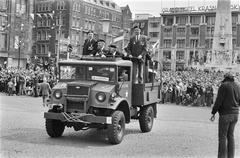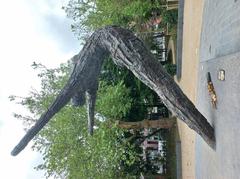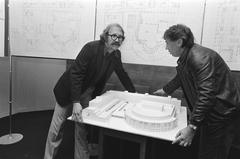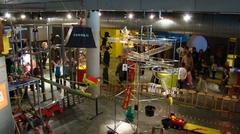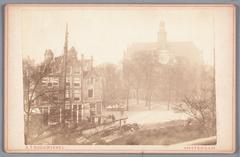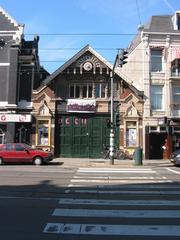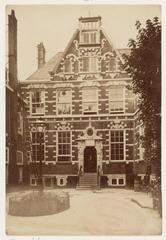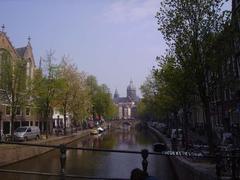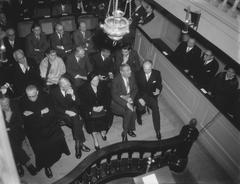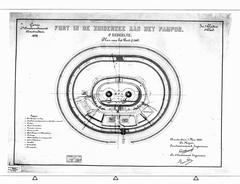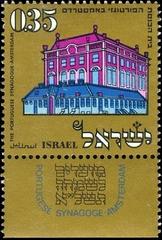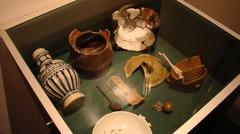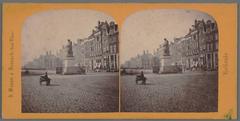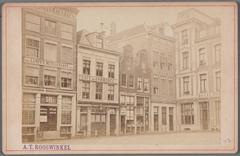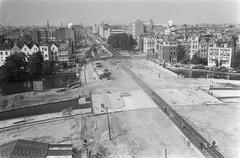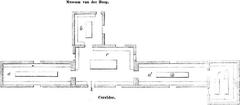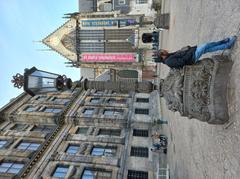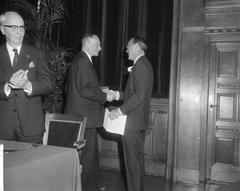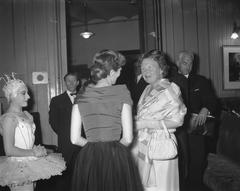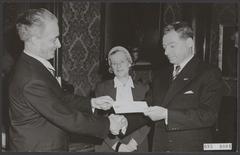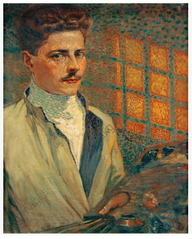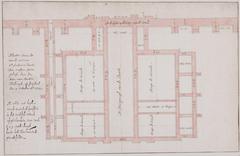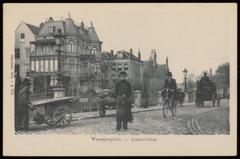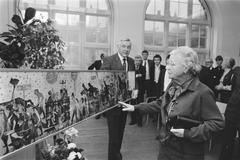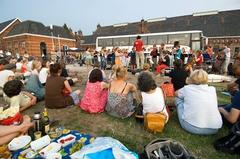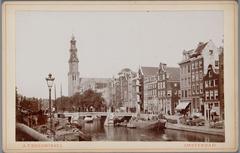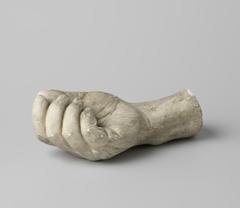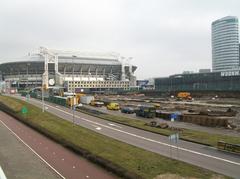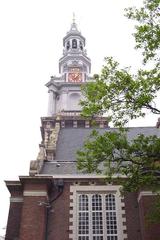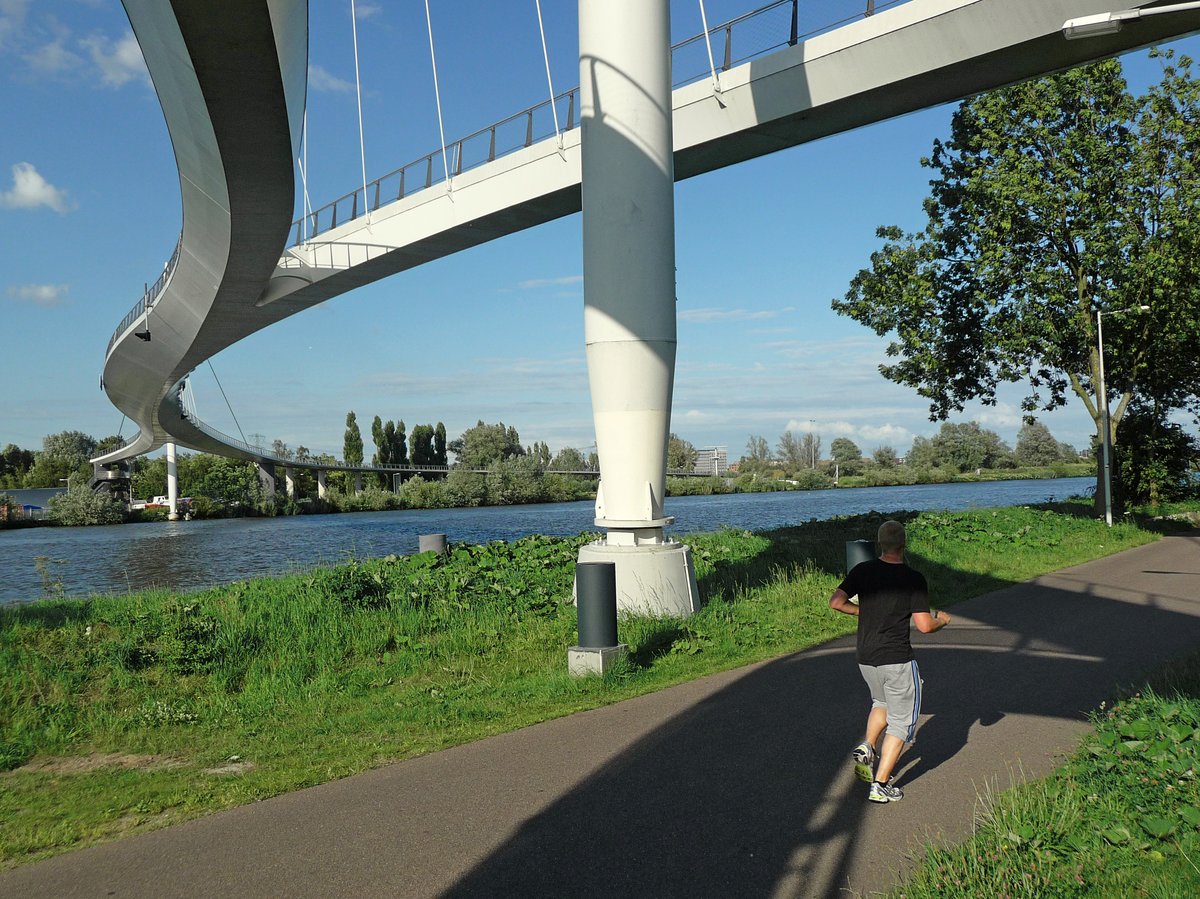
Guide to Nesciobrug in Amsterdam, Netherlands
Publication Date: 19/07/2024
Introduction
Amsterdam is a city where history and modernity coexist harmoniously, and the Nesciobrug epitomizes this blend perfectly. Completed in 2006, the Nesciobrug is not just an architectural marvel but also a bridge steeped in cultural and historical significance. Named after J.H.F. Grönloh, better known as Nescio, a celebrated Dutch author, the bridge connects the newly developed residential area of IJburg to Amsterdam’s Eastern Docklands. This connection is not merely physical but symbolic, linking the city’s industrial past with its innovative future.
Designed by the renowned architectural firm WilkinsonEyre, the Nesciobrug stretches over the Amsterdam-Rhine Canal, offering stunning views and serving as a crucial link for pedestrians and cyclists. Its sleek, minimalist design features a high arch for ship passage and a pedestrian walkway for panoramic views. Whether you are an architecture enthusiast, a history buff, or simply looking to explore a different side of Amsterdam, the Nesciobrug offers a unique experience that encapsulates the spirit of the city (Exploring Nesciobrug - Amsterdam’s Modern Marvel with a Rich Historical Tapestry, Exploring Nesciobrug - Visiting Hours, Cycling Paths, and Architectural Marvels in Amsterdam).
Contents Overview
- Introduction
- Historical Background and Significance
- A Bridge Named for an Author
- Nescio’s Amsterdam - A Literary Landscape
- Bridging the Past and Present
- Architectural Significance - A Modern Marvel
- Distinctive Features - Pylon and Deck
- Cable-Stayed System - Strength and Elegance
- Illuminating the Night - Lighting Design
- A Cyclist’s Dream - Integrated Bike Path
- Visitor Information
- Visiting Hours and Tickets
- Nearby Attractions
- Beyond the Immediate Vicinity
- Tips for Exploring
- Special Events and Guided Tours
- Photographic Spots
- FAQ
- Conclusion
Historical Background and Significance
The Nesciobrug, a relatively new addition to Amsterdam’s iconic canalscape, carries a weight of history that belies its modern design. Completed in 2006, the bridge stands as a testament to both the city’s innovative spirit and its rich literary heritage.
A Bridge Named for an Author
The bridge’s name, Nesciobrug, translates to “I Don’t Know Bridge,” a tribute to the pseudonym of Dutch writer J.H.F. Grönloh (1882-1961). Grönloh, better known by his pen name “Nescio,” was a celebrated author whose works often featured the very spot where the bridge now stands.
Nescio’s Amsterdam - A Literary Landscape
A civil servant by day and a writer by passion, Nescio found solace and inspiration in the eastern fringes of Amsterdam. His most famous novella, “The Man Who Couldn’t Stop Walking,” published in 1911, vividly portrays the area around the bridge. In the story, the protagonist, a young artist, embarks on long walks through the city’s outskirts, grappling with existential questions amidst the industrial landscape.
The area surrounding the Nesciobrug was, in Nescio’s time, a stark contrast to the picturesque canals and bustling city center. Factories and shipyards dominated the landscape, reflecting Amsterdam’s burgeoning industrial growth. This juxtaposition of nature and industry, of urban and rural, deeply influenced Nescio’s writing and continues to resonate with readers today.
Bridging the Past and Present
The construction of the Nesciobrug marked a significant moment in the area’s history. Once a symbol of Amsterdam’s industrial past, the bridge now represents the city’s commitment to urban renewal and sustainable development. The bridge connects the newly developed residential area of IJburg to Amsterdam’s Eastern Docklands, facilitating growth while preserving the area’s unique character.
Architectural Significance - A Modern Marvel
Designed by the renowned architectural firm WilkinsonEyre, the Nesciobrug is a marvel of modern engineering. Its sleek, minimalist design, characterized by a single, elegant arch, stands in striking contrast to the traditional drawbridges that dot Amsterdam’s canals.
The bridge’s design serves both aesthetic and practical purposes. Its high arch allows for the passage of large ships, while its pedestrian walkway offers stunning panoramic views of the city skyline and the IJ River. The use of weathering steel, which develops a protective rust-like patina over time, ensures the bridge’s longevity while minimizing maintenance.
Distinctive Features - Pylon and Deck
The Asymmetrical Pylon - A Beacon of Balance
The bridge’s most striking feature is undoubtedly its single, asymmetrical pylon. This white, concrete pylon, reaching a height of 60 meters, leans dramatically towards the western side of the bridge. This unique design element is not merely for aesthetics; it serves a crucial structural purpose. The pylon’s inclination counterbalances the forces exerted by the bridge deck, ensuring stability and balance.
The Sleek Deck - A Ribbon Across the Water
The bridge deck itself is a marvel of engineering. Its sleek, aerodynamic design minimizes wind resistance, a crucial factor considering Amsterdam’s often windy conditions. The deck is constructed from steel and concrete, materials chosen for their strength and durability.
Cable-Stayed System - Strength and Elegance
The Nesciobrug employs a cable-stayed design, a system where the bridge deck is supported by cables directly attached to the pylon. This method, often used for its efficiency and aesthetic appeal, allows for long bridge spans with fewer supporting structures.
A Fan of Steel Cables
The cables, arranged in a distinctive fan pattern, are not just functional but also contribute to the bridge’s visual appeal. These high-strength steel cables, numbering over fifty, work in tension to support the weight of the deck and its traffic. Each cable is meticulously anchored to the pylon and the bridge deck, ensuring even distribution of weight and optimal stability.
Illuminating the Night - Lighting Design
The Nesciobrug is particularly captivating at night. A sophisticated lighting system illuminates the bridge, highlighting its architectural features and creating a mesmerizing spectacle. The pylon, bathed in white light, acts as a beacon, while the cables, subtly lit, appear to shimmer against the night sky. This interplay of light and shadow accentuates the bridge’s elegant form, transforming it into a luminous sculpture.
A Cyclist’s Dream - Integrated Bike Path
Reflecting Amsterdam’s cycling culture, the Nesciobrug incorporates a dedicated bike path, physically separated from the roadway. This design prioritizes cyclist safety and promotes sustainable transportation. The bike path offers stunning panoramic views of the surrounding area, making it a popular route for both commuters and recreational cyclists.
Visitor Information
Visiting Hours and Tickets
- Visiting Hours: The bridge is open 24/7 for pedestrians and cyclists.
- Tickets: There is no charge to cross the bridge.
Nearby Attractions
- IJburg Islands: A modern residential area with parks and waterfront views.
- Amsterdam-Rhine Canal: Perfect for a scenic walk or a boat ride.
- Eastern Docklands: A blend of history and innovation with attractions like the Lloyd Hotel & Cultural Embassy and the Muziekgebouw aan ‘t IJ.
Beyond the Immediate Vicinity
While the areas surrounding the Nesciobrug offer plenty to explore, Amsterdam’s city center is easily accessible for further adventures.
- Central Amsterdam: A short tram or bicycle ride from the bridge will take you to the heart of Amsterdam, where you can explore iconic attractions like the Anne Frank House, the Rijksmuseum, and the Jordaan district.
- Amsterdam North: Take a free ferry across the IJ River to discover the up-and-coming Amsterdam North, home to the EYE Filmmuseum, the A’DAM Lookout, and the NDSM Wharf, a former shipyard transformed into a creative hub.
Tips for Exploring
- Plan your visit: While the Nesciobrug itself can be enjoyed in a short time, allow ample time to explore the surrounding areas and attractions.
- Consider a bike tour: Guided bike tours offer a fantastic way to discover the city’s hidden gems and learn about its history and culture.
- Pack for all weather: Amsterdam’s weather can be unpredictable, so be prepared for rain or shine.
- Purchase an Amsterdam City Card: This card offers free public transport, free entry to many museums and attractions, and discounts on various services. (I Amsterdam City Card)
Special Events and Guided Tours
The Nesciobrug occasionally hosts special events such as guided walking tours that delve into the history and architecture of the bridge and its surroundings. Check local listings or the official Nesciobrug website for upcoming events.
Photographic Spots
The Nesciobrug offers several excellent spots for photography. The panoramic views from the pedestrian walkway are particularly striking, especially at sunrise and sunset. Capture the blend of modern architecture and natural beauty as you look out over the IJ River and the Amsterdam skyline.
FAQ
Q: What is the best time to visit the Nesciobrug?
A: The bridge is beautiful any time of day, but early morning and late afternoon offer the best lighting for photography.
Q: Is the Nesciobrug accessible for people with disabilities?
A: Yes, the bridge is fully accessible for pedestrians and cyclists, including those with limited mobility.
Q: Are there any guided tours available?
A: Yes, guided tours are occasionally available. Check the official Nesciobrug website for the latest information.
Q: How do I get to the Nesciobrug?
A: The bridge is easily accessible via tram line 26 from Amsterdam Central Station to IJburg.
Conclusion
The Nesciobrug stands as a powerful symbol of Amsterdam’s ongoing transformation. It represents the city’s ability to embrace modernity while honoring its past, to blend innovation with tradition. For visitors, the bridge offers a unique opportunity to step outside the city center and explore a different side of the Dutch capital. As you walk or cycle across the Nesciobrug, you’ll be immersed in a landscape that inspired one of Amsterdam’s most celebrated authors, all while enjoying stunning views and a serene atmosphere. Don’t forget to download our mobile app Audiala for more travel tips and updates, and follow us on social media for more exciting content!
Sources
- Exploring Nesciobrug - Amsterdam’s Modern Marvel with a Rich Historical Tapestry, 2024, Audiala source
- Exploring Nesciobrug - Visiting Hours, Cycling Paths, and Architectural Marvels in Amsterdam, 2024, Audiala source
- Exploring Nesciobrug - Visiting Hours, Tickets, and Nearby Attractions in Amsterdam, 2024, Audiala source
